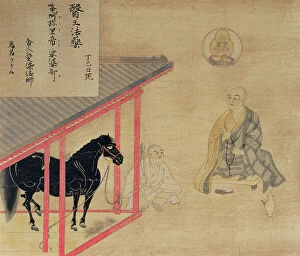Hippiatry Collection
"Hippiatry: The Ancient Art of Equine Healing Unveiled" Step into the world of ancient veterinary medicine as depicted in historical manuscripts and artworks
All Professionally Made to Order for Quick Shipping
"Hippiatry: The Ancient Art of Equine Healing Unveiled" Step into the world of ancient veterinary medicine as depicted in historical manuscripts and artworks. From Ms Grec 2244 fol. 4's delicate depiction of a horse being operated on, to the meticulous process of shoeing a horse captured in Ms 214 fol. 46v, these glimpses offer us an insight into the fascinating field of hippiatry. Intriguingly, Ms 214 fol. 26v showcases the treatment for glossitis in horses, revealing that equine ailments were not overlooked by our ancestors. Meanwhile, Cours d Hippiatrique ou Traite Complet de la Medecine presents an intricate anatomy lesson with its detailed illustration of a horse's internal structure. The dedication and care given to horses are evident throughout history - whether it be treating mange (Ms 214 fol. 38r), performing surgeries (Ms Grec 2244 fol. 37v), or even extracting diphtheria serum from their blood (Les Animaux). These practices demonstrate the deep bond between humans and these majestic creatures. Not only do we witness practical applications like mending fractured metacarpals (Ms 214 fol. 31v) but also artistic interpretations such as Philippe-Etienne Lafosse's captivating oil painting depicting a lesson in hippiatric anatomy. Unveiling the secrets hidden within dissections, Cours d Hippiatrique ou Traite Complet de la provides us with an intimate look at how veterinarians examined every aspect of a horse's body to better understand its health and well-being. As we delve into this visual journey through time, let us appreciate the tireless efforts made by those who dedicated themselves to preserving equine welfare through centuries-old techniques and knowledge passed down from generation to generation.












